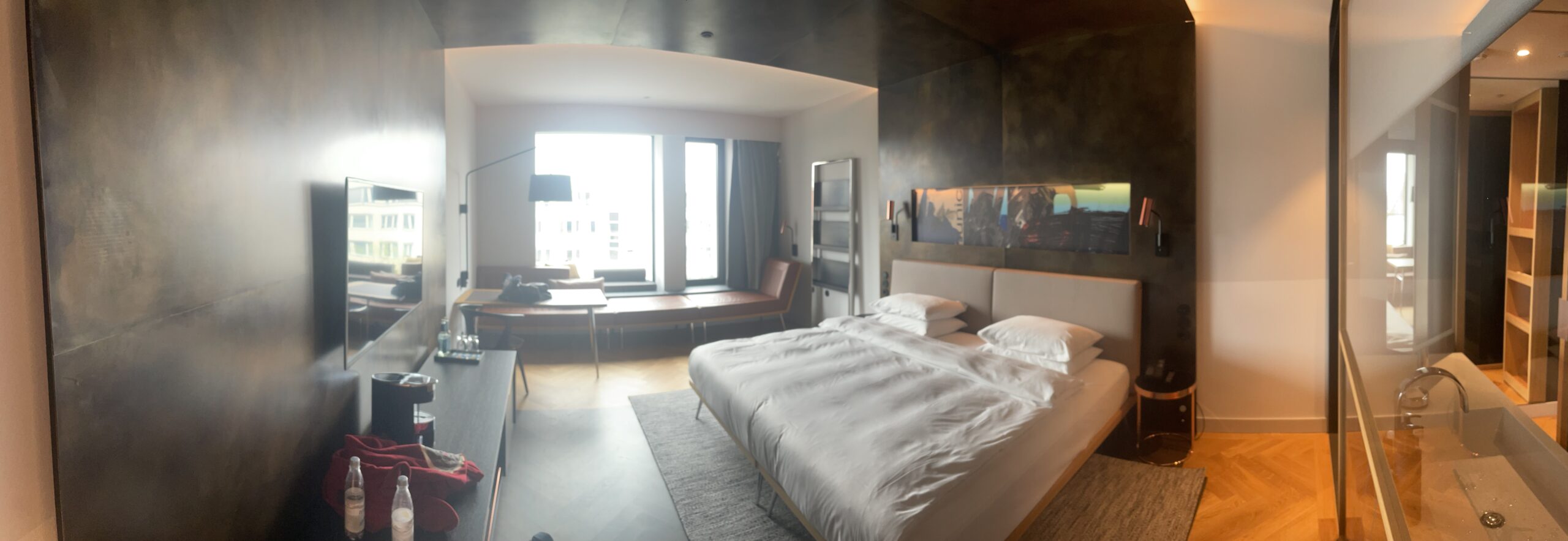We went on another Viking River Cruise this year, the one advertised as the “Danube Waltz”. We loved the first one we did on the Rhine 5 years ago, and so we’ve been really looking forward to this one. Obviously COVID put a bit of a damper on this, but Viking’s COVID protocols looked very strong – daily testing, modified ventilation system on the ships, hand sanitizer stations everywhere, mask rules, etc. As well as the standard Danube Waltz, we signed up for the 4 day “Pre Extension” in Munich and Salzburg.
I should start with a disclaimer: after the last cruise turned into a complete muddle in my mind and being unable to remember which day we saw which city, I vowed to keep proper notes and remember things. Spoiler alert: I didn’t. One of the couples we hung around with on the trip worked as a team with her taking many photos with an SLR, and him making notes just about every time she took photos. We weren’t that couple. I was doing most of my photography/video with a GoPro and unlike the phone it doesn’t tell you where the photo was taken and it’s not even 100% consistent about having the right date stamp on the file. So expect some vagueness about what happened when.
The first day was flying out of Rochester to Dulles to Munich. There’d been a huge muddle with our flights – the Viking website “My Viking Journey” continually showed the flight itinerary as “unavailable due to changes from the airline” for months and months at a time. Finally about 90 days before the departure I phoned Viking and they “finalized” the travel arrangements, only to change them again a week or so later. Once that happened, I started going to the United site to buy upgrades with our miles, but all they had was a thing where you could pay some dollars and some miles (I think it was over $500 each) and go on the wait list for the upgrades, and if the upgrades never arrived they’d supposedly refund the money and miles. (Spoiler alert: They haven’t). And then with a week to go before the flight they still hadn’t given us the upgrades we’d paid for and were waitlisted for, I noticed Economy Plus seats were available on the long leg. I decided flying across the Atlantic in economy is intolerable, so I spent another $250 each to get us Economy Plus. I still have no idea why they didn’t give them to us via this stupid wait list thing.
Our return trip was Budapest to Munich to Chicago to Rochester, and the first two legs were on Lufthansa. So I went to Lufthansa’s web site and bought business class upgrades on the first two legs. It was just a direct payment for upgrade, none of this “we’ll take your money and maybe refund it if you don’t get the upgrade” business. I’ve tried to purge how much that upgrade cost from my mind, because it wasn’t cheap.
I was a little worried because there was basically only an hour to change planes in Dulles. And even more worried when I got an email a day before departure saying there are forecasted thunderstorms on the eastern seaboard and to expect delays. And of course it happened exactly as I expected – our flight out of Rochester was delayed by over 90 minutes, and the departure of our second leg was not marked as delayed.
I got on the phone to United, and after explaining over and over what was happening to the rep with the almost indecipherable Indian accent, she said it was taken care of, we were booked on a Lufthansa flight leaving Dulles at 10:20 pm. So then I called Lufthansa to see if we could get any sort of upgrade on that flight, and they said they couldn’t because the United rep had double booked us on both the Lufthansa flight, and the United flight that they were code sharing with. So we were essentially double booked on the flight and it was screwing up their ability to assign us seats. I looked at the United App and as well as being double booked, we were still booked on the United flight we were going to miss. I called up United to get them to screw up, and once again got a person with an Indian accent. This one was slightly more understandable, but she acted like she’d never heard of the concept of missing a flight because your previous leg was delayed before. Surely this must be the main thing they do all day? Anyway, after slowly and with many, many, many repeats, I got her to understand that no, I did not want her to cancel our flights from Rochester to Dulles, I did want her to cancel the flight that was leaving Dulles before we got in, I did want her to cancel our United booking on the Lufthansa flight and NOT cancel the Lufthansa flight. It was still screwed up on both the United App and the Lufthansa App (which I had downloaded by this point because I wasn’t trusting anybody a rep told me).
When we got to Dulles, the flight we had been supposed to leave on was still on the departure boards showing something like “BLOCKED”, which makes me wonder if we could have made it, but when we got to the Lufthansa desk we found we were booked on the 10:20 flight, and we were way in the back in a middle section in economy. No upgrades were available because they were very full. So basically I had 8 hours of extreme discomfort to start the trip. Thank god for my special seat pillow. I actually think I napped a bit.
We arrived in Munich at our hotel about 24 hours after we’d left home. I’d probably had 2 hours sleep during that time, and I don’t think Vicki had any. I’m not sure if we ever got properly acclimatized to European time after that start, but because my normal sleep schedule is so fucked up by my pain it’s hard to tell.
The hotel was gorgeous, although it was very modern and in the two nights we had there I don’t think we completely figured out the weird light switches and weird shower. I don’t recall if we had time for a nap, but we did meet our Viking tour guide and the other couples on the “pre-extension”. We also nipped out for a bit of a walk around, and found an ATM to get out some Euros. We also had dinner in one of the hotel restaurants. It wasn’t a particularly beautiful part of Munich and it was a bit drizzly so it wasn’t a great intro, but we were here in Europe. So far, so good.

A brief note on COVID precautions at this point. We did a PCR test a few days before we left. I seem to recall the Lufthansa gate agent needed to see our vaccination certificates but not our test results, but the German customs wanted both, or maybe it was the other way around. We had to wear masks on the the flights, and in the Munich airport and in the bus ride to the hotel. I think some of the hotel staff weren’t wearing them, but we did except when we were in our own room, walking outside or sitting eating. Viking gave us a spit tube each to do a test the first morning after we arrived. I’ll talk about the protocols and precautions on subsequent days as I talk about those subsequent days.

